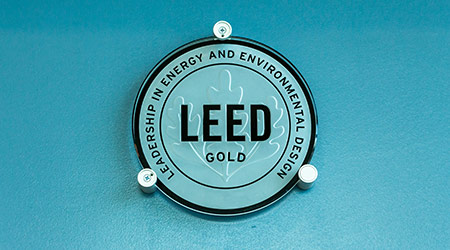Green building worldwide is poised to grow in the next three years. That’s according to the 2018 Dodge Data & Analytics World Green Building Trends 2018 SmartMarket Report, released last month. It’s also a good indicator for the continued development of LEED.
it’s equally important for all buildings to get on a path to sustainability and help raise the standard of living for people worldwide, according to an article on the Building Operating Management on the FacilitiesNet website..
Healthier buildings have emerged as an important trigger for green building globally, according to the report, and improving occupant health and increasing productivity rank first and third, respectively, among social drivers for green building. Importantly, two thirds of survey respondents said that using a rating system allows them to create better performing buildings, and more than half say rating systems provide essential third-party verification.
As the global rate of green building grows, rating systems must also adapt. With that in mind, here’s some of the biggest news about LEED to come out of Greenbuild 2018 in Chicago:
• LEED Zero Certification — LEED projects can achieve LEED Zero certification when they demonstrate any or one of the following: net zero carbon emissions, net zero energy use, net zero water use, or net zero waste. The program is open to all LEED projects certified under BD+C, ID+C, or O+M rating systems, or registered to pursue LEED O+M certification. Projects pursuing LEED Zero Waste must submit a TRUE Zero Waste Platinum certification. All other LEED Zero projects must provide 12 months of performance data for their desired category.
• LEED Recertification — All LEED projects — past, present, and future — are now eligible for recertification by providing 12 months of data that shows consistent or improved performance, using the most recent version of the LEED rating system. This recertification will be valid for three years and is an important step in ensuring that a green building is operating the way it was intended.
• LEED Transit Rating System — With LEED Transit, transit owners can reduce their environmental footprints while also educating riders on the importance of sustainability and the opportunity the public transportation sector has in minimizing global greenhouse gas emissions.
• LEED for Cities and Communities fully merges with STAR Communities — The STAR Community Rating System, which offers certification for sustainable communities, has been fully integrated into USGBC’s LEED for Cities and LEED for Communities programs. All localities previously STAR-certified or pursuing STAR certification will transfer into the family of LEED Cities.

 UF Health Hospitals Rely on Green Globes to Realize Their Full Potential
UF Health Hospitals Rely on Green Globes to Realize Their Full Potential How Healthcare Facilities Can Be Truly Disaster-Resilient
How Healthcare Facilities Can Be Truly Disaster-Resilient TriasMD Breaks Ground on DISC Surgery Center for San Fernando Valley
TriasMD Breaks Ground on DISC Surgery Center for San Fernando Valley Bigfork Valley Hospital Falls Victim to Data Breach
Bigfork Valley Hospital Falls Victim to Data Breach AI-Driven Facilities: Strategic Planning and Cost Management
AI-Driven Facilities: Strategic Planning and Cost Management